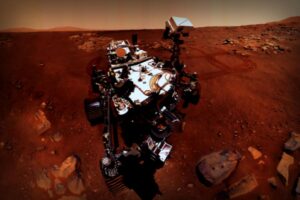NASA has taken a strong stance against the theory proposed by Harvard astrophysicist Avi Loeb, which suggested that 3I/ATLAS, an interstellar visitor, might have been sent by an extraterrestrial civilization. This finding, although sobering, isn’t exactly surprising and could very well put the thrilling idea to rest.
The exciting case began unfolding in early July when astronomers identified 3I/ATLAS, marking it as only the third interstellar object ever detected in our solar system.
In the wake of this discovery, Loeb has pursued the bold notion that 3I/ATLAS was intentionally directed towards the inner solar system and proposes that it could even be emitting “mini-probes” for exploration.
However, many in the scientific community are leaning towards the belief that the object is actually a comet—a massive ball of ice and dust that sheds material as it approaches the Sun.
Loeb is no stranger to controversy, having previously suggested that ‘Oumuamua, the first interstellar object identified in 2017, was also possibly made by alien life.
With his latest assertion, Loeb cites 3I/ATLAS’ unique chemical composition, its unusual trajectory which brings it close to Mars and Jupiter, and its anticipated gigantic size as evidence for his claims.
Nonetheless, NASA’s lead scientist for small solar system bodies, Tom Statler, conveyed to The Guardian that the evidence strongly suggests it is, in fact, a comet. He states, “It looks like a comet, and it performs comet-like behavior. In many aspects, it strikingly resembles the comets we’re already familiar with.” In his definitive conclusion, he succinctly says: “It’s a comet.”
Statler did acknowledge that 3I/ATLAS possesses some intriguing characteristics that slightly deviate from typical solar system comets.
He elaborated, saying that how comets respond to the Sun’s rays can be unpredictable. For instance, if a piece of ice within the comet sublimates rapidly, it could cause the comet to suddenly brighten significantly.
To date, we have only observed three interstellar visitors; however, Statler is optimistic that 3I/ATLAS will not be the last one we see. He mentions, “These phenomena are not entirely new. We’ve just reached a point where we can detect them. This opens a brand-new frontier, allowing us unique insight into the compositions of alien solar systems.”
Loeb himself has recognized that 3I/ATLAS may very well be just a comet, missing critical spectral features due to its distance from our planet.
In a July 12 blog, he acknowledged, “The simplest explanation is that it’s a comet” but also urged scientists to remain open to all possibilities.
He proposed that open-minded scientists should embrace the opportunity to learn new things, reflecting, “While the traditionalist may disregard unexplained data, those who embrace curiosity will continually discover fresh insights—with a sense of humility.”
Loeb argues that not everything in the cosmos can easily be classified as icy rocks or human inventions; if there are other life forms out there, dismissing this possibility won’t clarify our understanding.
For Additional Insights on 3I/ATLAS:Learn More about the Peculiar Behaviors of This Interstellar Object
The original article can be found on Futurism.


















